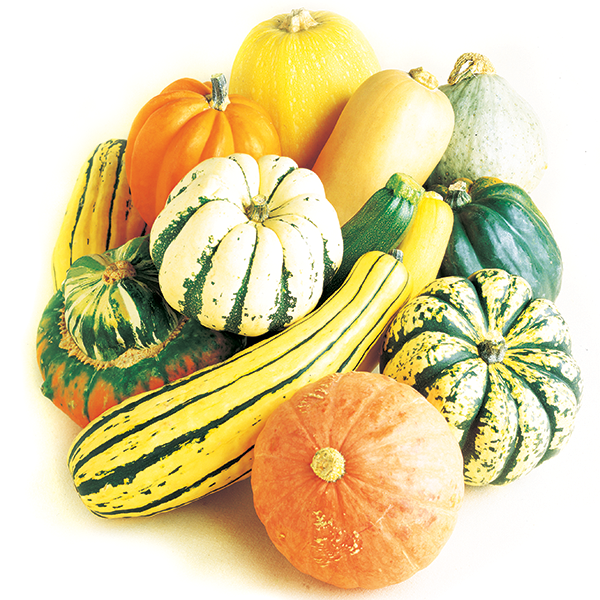
Squash is a popular seasonal item but keep it in your promotional plan year-round as it is popular with health-conscious shoppers. Offer multiple varieties of squash to your consumers. Clearly label each variety and offer some information on the taste and uses of each type of squash.
Shipping
summer squash 42-lb. bushel and 11⁄9-bushel containers 35-lb. cartons/crates 30-lb. 3⁄4-bushel cartons/crates 26-lb. cartons/lugs (California, Mexico) 21-lb. 1⁄2- or 5⁄9- containers 10-lb. 8-quart baskets/cartons
Grades
summer squash U.S. No. 1 U.S. No. 2
Handling
*Temperature: soft, 41 to 50 F, 5 to 10 C; *Relative humidity: soft, 95%; *Mist: summer, lightly; *Typical shelf life: soft, 7 to 14 days; *Ethylene-sensitive (Do not store or transport ethylene-sensitive items with commodities that produce ethylene.) *Soft squash is highly sensitive to freezing injury. (Likely to suffer injury by one light freezing.) *Susceptible to chilling injury (Damage sometimes is not apparent until the produce is returned to a higher temperature.) *Summer squash can be held at 32 to 40 F, 0 to 4.4 C for periods of less than four days. Use immediately after removing from refrigeration. *Scallopini squash is more perishable. Refrigerate and use promptly. *Summer squash that has been frozen will turn to mush due to high water content.
1⁄3-1⁄2 lb. winter squash = about 1 serving 2-lb. peeled, trimmed squash = about 4 cups cooked or 4 servings 1-lb. summer squash = about 4 cups grated 1-lb. summer squash = about 2 cups salted and squeezed 1-lb. summer squash = about 31⁄2 cups sliced or chunked 1-lb. summer squash = about 11⁄4 cups mashed 1-lb. summer squash = about 3 to 4 servings